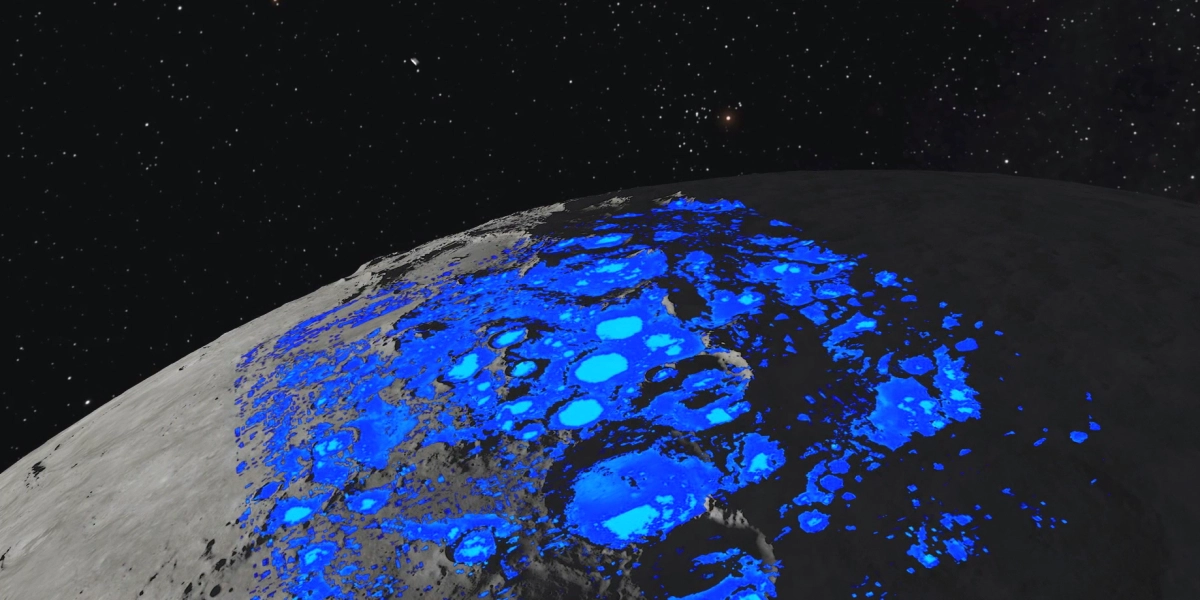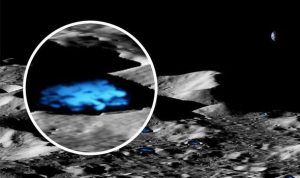- 21 September 2023
- 74
Icy Prospects: Moon’s Water Ice as a Pivotal Resource for Upcoming Space Missions

Introduction
Space exploration has always been intertwined with the quest for resources beyond our home planet. Water, a fundamental necessity for life as we know it, has been a scarce commodity in the vastness of space. However, recent advancements have offered a glimmer of hope. NASA, the pioneer in space exploration, has made a remarkable discovery—the presence of water ice on the Moon. In this article, we journey through the implications of this breakthrough and how it could revolutionize upcoming space endeavors.
NASA: Pioneering the Frontier of Space
NASA, or the National Aeronautics and Space Administration, has stood at the forefront of space exploration for decades. Their missions have expanded our understanding of the cosmos and continually pushed the boundaries of human knowledge. The recent discovery of water ice on the Moon is another testament to NASA’s unwavering commitment to exploring and unlocking the secrets of the universe.

The Moon’s Water Ice: A Game-Changing Discovery
Water has always been considered a precious resource in space exploration. Its potential applications are vast, ranging from sustaining life to serving as a fuel source. The presence of water ice on the Moon, as indicated by recent discoveries, is a game-changer.
The Moon’s water ice is believed to be present in the permanently shadowed regions near its poles. These regions are extremely cold, and scientists have long suspected that they could contain water in the form of ice. The confirmation of this hypothesis opens up a world of possibilities for future space missions.
The Significance of Moon’s Water Ice
The discovery of water ice on the Moon is significant for several reasons. Firstly, water is vital for the survival of astronauts on extended missions. It can be used for drinking, hygiene, and food preparation. Having a local source of water drastically reduces the need to transport it from Earth, making long-duration missions more feasible.
Moreover, water can be broken down into its constituent elements, hydrogen and oxygen. Hydrogen can serve as a potent fuel source, providing energy for spacecraft. Oxygen is, of course, crucial for respiration, providing a sustainable way to support astronauts during their missions.
Water can also act as a radiation shield, protecting astronauts from the harmful cosmic radiation that pervades space. This additional layer of protection is crucial for the long-term health and well-being of astronauts.
Utilizing Moon’s Water Ice in Space Missions
The potential uses of the Moon’s water ice in upcoming space missions are diverse and promising. Here’s a breakdown of the various applications:
- Drinking Water: Water is a fundamental requirement for human survival. Having a local source on the Moon ensures that future lunar missions can sustain a human presence for extended periods.
- Oxygen Production: By breaking down water into hydrogen and oxygen, astronauts can have a renewable source of oxygen for breathing, reducing the need to carry oxygen from Earth.
- Hydrogen Fuel: Hydrogen, extracted from water, can be utilized as fuel for spacecraft, providing an energy source for propulsion and other operations.
- Irradiation Shielding: Water can be used to shield astronauts from the harmful effects of cosmic radiation, acting as a barrier between them and the harshness of space.
Pioneering the Future: NASA’s Vision
NASA’s plans for harnessing the Moon’s water ice are ambitious and forward-thinking. They envision using this newfound resource as a stepping stone for further space exploration. By leveraging the water ice on the Moon, NASA aims to establish a sustainable human presence on our lunar neighbor and beyond.
Their Artemis program, named after the ancient Greek goddess of the Moon, is a prime example of this vision. Artemis seeks to land the first woman and the next man on the Moon by the mid-2020s. The presence of water ice on the Moon significantly contributes to the feasibility and sustainability of these missions.
Conclusion
The discovery of water ice on the Moon is a groundbreaking revelation that holds the potential to reshape the landscape of space exploration. Its applications, from sustaining life to providing fuel for further missions, are monumental. As we look towards the future of space exploration, NASA’s pioneering efforts and discoveries like this underscore the promise of what lies beyond our home planet. Let us anticipate and support the exciting prospects that this newfound resource offers, as we continue our journey into the cosmos.

